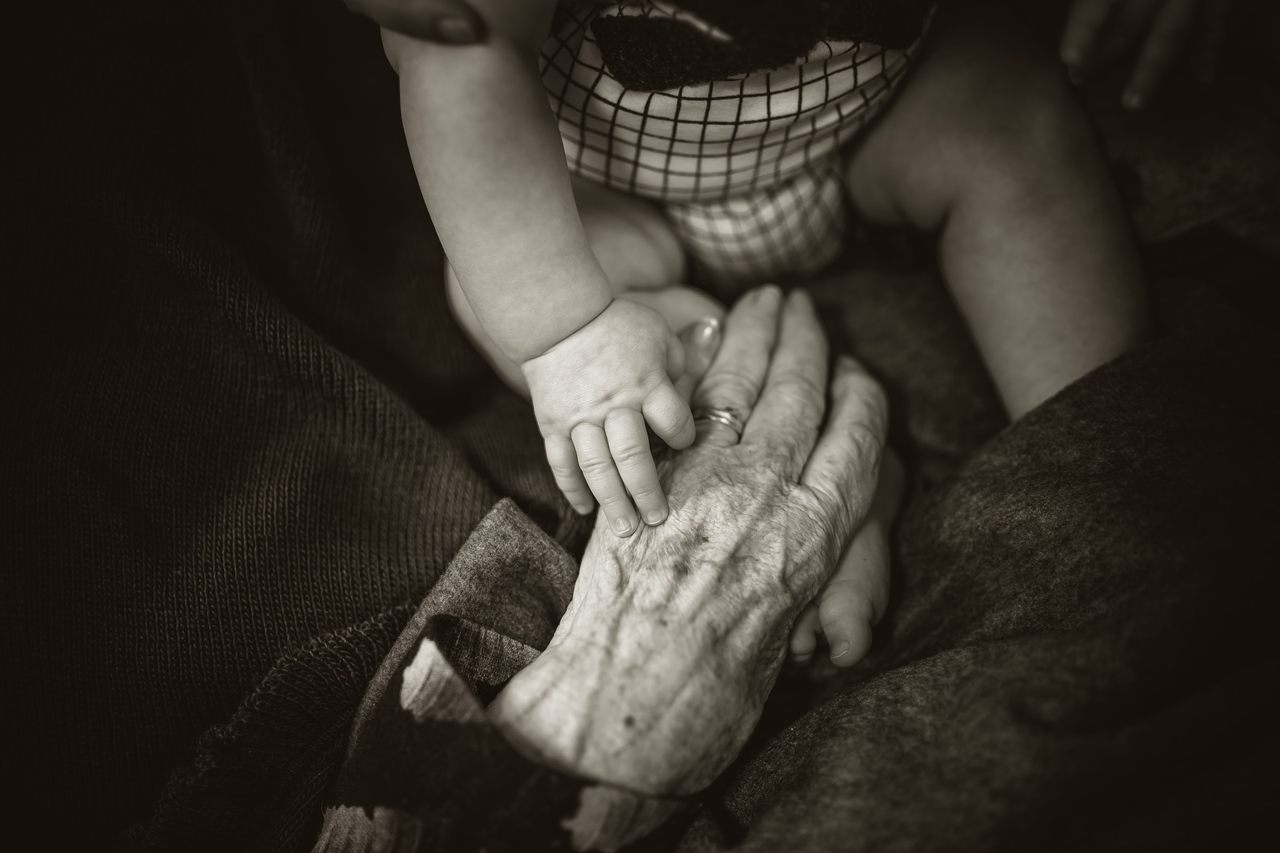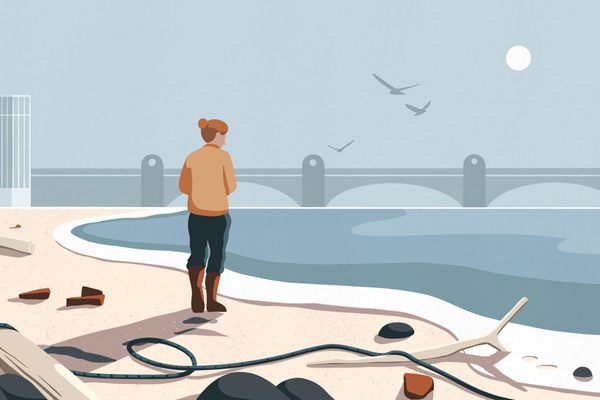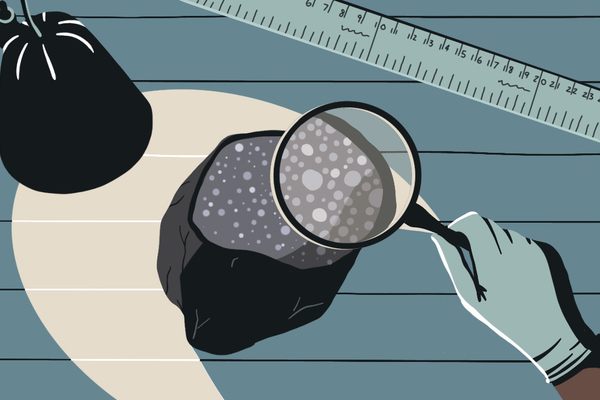It’s the Perfect Time to Record Your Family’s History. Here’s How.
Invite your relatives to share great stories with these tips from oral historians.
Sheltering in place with your family means more opportunities to share meals, play games, and possibly drive each other a little batty. The extra hours of togetherness are also a good opportunity to collect oral histories. Whether you want to dive into family lore or record a snapshot of life in the era of COVID-19, there are several ways to set yourself up for sympathetic listening and enthusiastic sharing on all sides.
Atlas Obscura talked to four oral history project coordinators in New York City—an epicenter of the coronavirus pandemic in America—about how to have an engaging, respectful conversation about the past and present, and celebrate connections during a difficult time.
Gather your supplies
You’ll probably want to record the conversation, but there’s no need to spring for fancy equipment, says Natalie Milbrodt, the director of the Queens Memory Project; the microphone in your smartphone should work just fine. Even so, it’s a good idea to keep a second device, such as a simple audio recorder, recording at the same time in case your phone battery dies, or a long audio file eats up all the available storage space. You can also record directly into computer programs such as Audacity or GarageBand. Transom, a hub for public radio producers, has plenty of pointers for recording clean audio.
Grab some props to use as prompts
If you’re inviting someone to wander far back into their past, it might help to have some photos to jog their memory. A snapshot can parachute them back in time; it may make it easier for a person to recall how a given moment sounded, smelled, or felt. Photos can be helpful for the interviewer, too. “A kid looking at a childhood photo of a grandparent can see, ‘Oh, you were a kid, too,’” says Meral Agish, the community coordinator at the Queens Memory project, which is currently collecting oral histories about life in the time of COVID-19. Talking about games or time at school establishes common ground between kids and grandparents from the get-go.

Brainstorm open-ended questions
With any oral history, you want as many details as possible. “That’s where the interesting stories are, in those details, whether it’s something that happened 60 years ago or yesterday,” Milbrodt says. If you’re talking about COIVD-19, for instance, “What you want to be doing as an interviewer is getting past general statements, like, “That’s when everybody took care of each other, and things were different,’” Milbrodt says. “What you want is a specific example.” The key to arriving at one is asking questions that invite the interviewee to roam a little in their answers.
Virginia Marshall, who produces the Borrowed podcast for the Brooklyn Public Library and is coordinating the library’s COVID-19 oral history effort, often channels the types of broad, non-judgmental questions her mother—a primary care doctor—asks patients. If someone mentioned experiencing illness, for instance, an open-ended question might be something along the lines of, “What was that like?” To learn more about how communities are reacting to the pandemic, she might ask something such as, “How has your neighborhood changed?” Asking about a person’s daily routine, for example at home or work, also gives them the chance to wander around narrative cul-de-sacs full of details. When asking interviewees about their life history, Agish says, “I might start with, ‘Tell me about your earliest memory.’” The question is specific, but open, and leaves space for a variety of answers.
Help the interviewee prepare
Before you sit down and start asking questions, you’ll want to share a preview of the topics you’re interested in. “They shouldn’t be thinking about it for the first time after you hit record,” Milbrodt says. “They should be raring to go.”
Remembering doesn’t happen all at once: Interviewees often recall things in bursts, sometimes days after they start turning a memory over in their minds, Milbrodt adds. That’s why the Queens Memory Project team often sends out pre-interview questionnaires, which prompt people to start thinking about the chronology of their life, and firm up the dates of major events. “Getting all those things straight, ahead of time, will help get them to the specific memories that are more interesting to hear about,” Milbrodt says. “It’s about peeling that onion and getting back to those places in their mind.”
It’s also helpful to agree on some ground rules. For the interviewer, that might include sentiments such as, “I won’t interject, and I will create the space for you to share your thoughts,” says Taina Evans, the regional librarian at the Brooklyn Public Library who oversees the “Our Streets, Our Stories” project, the institution’s ongoing oral history effort. That kind of pledge can help the interviewee relax and feel comfortable.

Find a quiet space—in person, or digitally
When it’s time to chat, you’ll want to carve out some peaceful time, and hush whatever distractions you can. Turning off the air conditioner and corralling loud pets into another room will help both interviewer and interviewee focus on the task at hand and boost the quality of the audio recording. In a time when houses are busy and full, you’ll need to be sensitive to fatigue or interruptions, Agish adds. Either person might be tired from staring at screens, she says, or “dealing with the three-year old knocking on the door, desperate to do something with you.”
If you’re chatting in person, Agish suggests gathering around the corner of a table. The table is a good place to perch a recorder, and it doesn’t invite the same kind of slouching that a couch might, Agish says, which can make it harder for people to project their voices. Digital chats can work well, too—it’s easy enough to record via Skype, Zoom, or other face-to-face chat services, and the “mute” function help interviewers refrain from chiming in with “yeahs” and “uh-huhs,” which can interrupt the speaker’s train of thought or cause distractions for the listener. (At the same time, if the topic of conversation is difficult, an interviewer may offer some words of recognition, as a gesture of support.)
Break long interviews up into manageable chunks
“If you interview someone for less than an hour, you’re not getting great detail of information,” Milbrodt says. “If it’s more than two hours, you’re exhausting them.” An interview that spans someone’s entire life history would benefit from being broken up into chunks. Milbrodt is currently doing a life history interview with her father, and they’re on their fifth session (the first chat, for instance, only covered the history of the family before he entered the picture).
Whether the chat is a one-off or part of a series, once it winds down, you may want to help ease the interviewee back into talking about something else—particularly if the topic was emotionally raw. Marshall recently did an digital oral history with her cousin, a doctor at Kings County Hospital in Brooklyn who has been treating people with COVID-19. After the cousin shared her story, Marshall asked her what she was planning to have for dinner. It wasn’t germane to the interview—Marshall had already turned the recorder off—but about supporting someone who had taken the time to talk about something stressful while her life was in flux. An oral history isn’t about extracting a story—it’s about strengthening bonds, and appreciating people who take the time to share their view of the world.












Follow us on Twitter to get the latest on the world's hidden wonders.
Like us on Facebook to get the latest on the world's hidden wonders.
Follow us on Twitter Like us on Facebook